The Gunnison River is one of the West’s most iconic rivers. It passes through breath-taking canyons, world class fish reside in its waters, and it provides a pristine wilderness experience for all those who jump in a boat and head down river. In this article, we’ll briefly discuss the rivers history and what forces came together to make it what it is today.

Discovery of the Black Canyon
The river gets its name from Lieutenant John Gunnison who was tasked with finding a route for the railroad west in the 1850’s. Gunnison followed the river, at the time known as the Grand River, hoping it would lead him to an adequate path to place a railroad.
Needless to say, Gunnison would hit a serious roadblock when one of the deepest, longest, and narrowest gorges in the world laid before him. Gunnison quickly realized that a railroad through the canyon would be an incredibly difficult task. Wisely, Gunnison decided to avoid the canyon for his railroad and go through present day Montrose.
Ellsworth Kolb and his crew were the first to float the river through the black canyon. Their gear was not ideal for navigating the rocky and turbulent rapids. They lost several boats, hundreds of pounds of equipment and provisions but eventually they would find success.
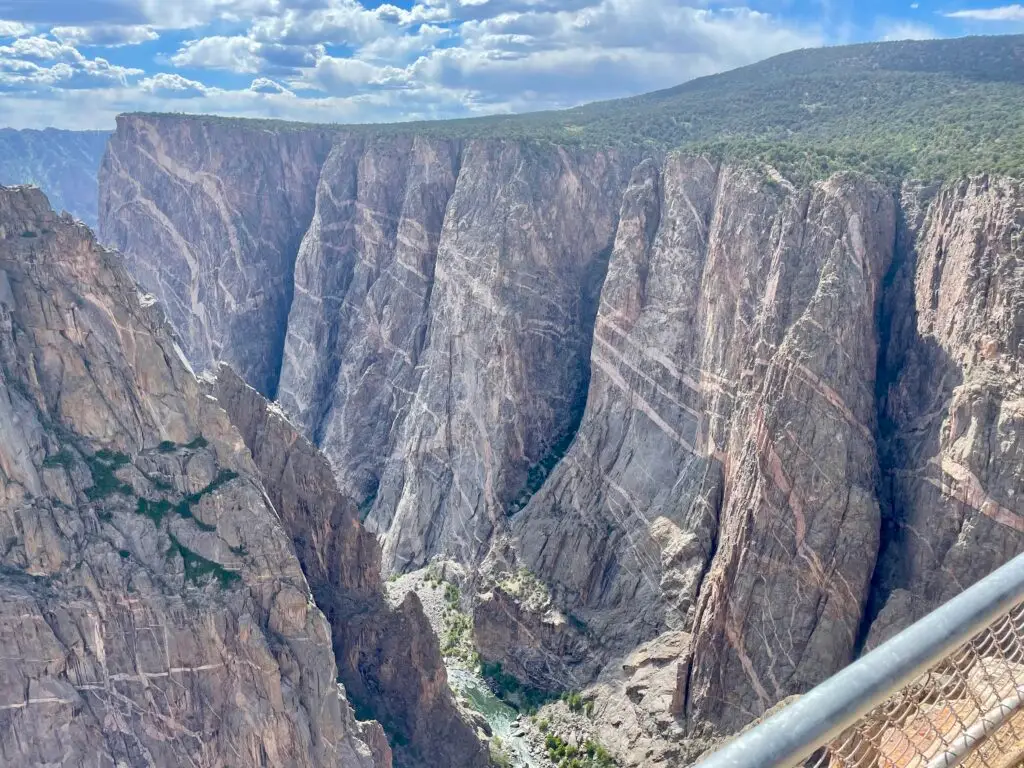
Dams on the Gunnison
The Gunnison River flows for 180 miles beginning where the East and Taylor Rivers meet, near the town of Almont. It flows Southwest into the town of Gunnison and then turns west where it flows into Colorado’s largest body of water: Blue Mesa Reservoir.
Blue Mesa Reservoir is one of three reservoirs created by man-made dams. Crystal Reservoir and Morrow Point Reservoir tame the river further until it is released near the East Portal river access point.
Obviously, these dams weren’t here initially. They were built in the 1960’s and served to provide water and generate electricity for the local communities. There is even a 5-mile diversion tunnel that helps provide water for the Uncompahgre valley.
Love ’em or hate ’em, the dams play a huge roll in the quality of our fishery on the Gunnison. The dams allow for a consistent and near perfect water temperature year-round for trout. The high canyon walls keep the water cool far below the dams and with limited inflow from rain, the quality of the water is clean with a small green tint, known as “Gunni Green.”
The structure of the river provides prime habitat for trout. Large boulders provide excellent ambush points for big trout and the long, gentle riffles provide a buffet line of food. Aerated rapids give way to long, slow, and deep pools providing every type of water trout could want.
The set up isn’t just perfect for the fish; it’s also prime for the insects on which fish feed, which is arguably more important. Without the bug life we have in the Gorge, we would lose the world class fishery.
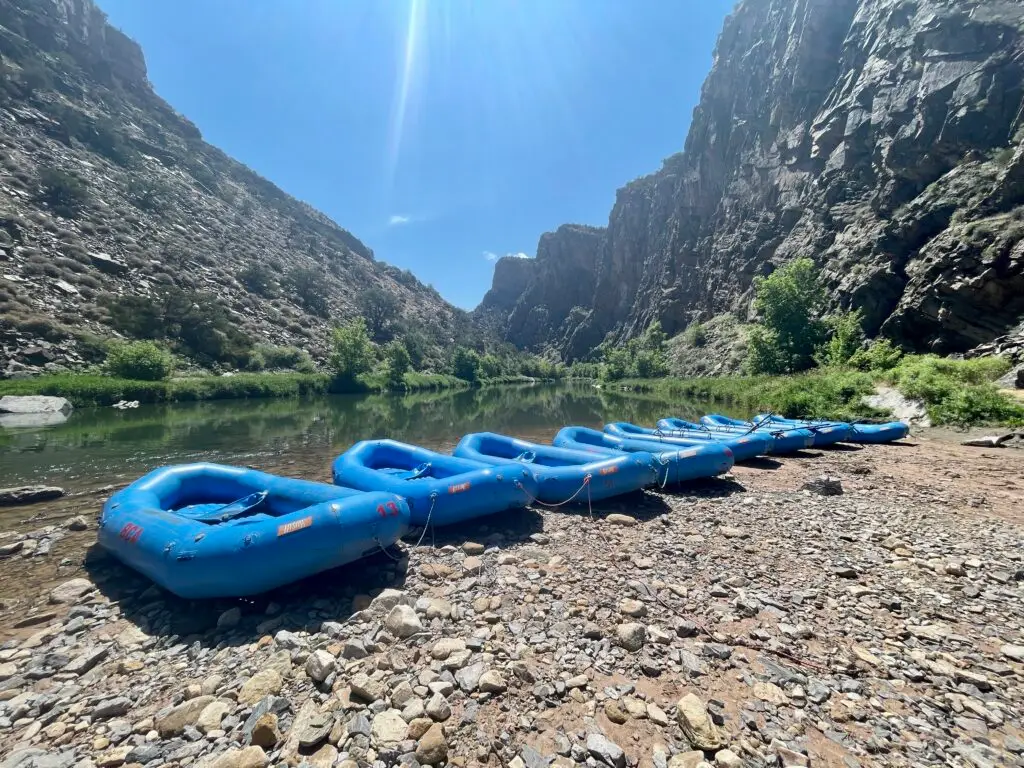
Below the Dams
Immediately below the Crystal Dam you’ll find the East Portal. This area provides the first access point to the Gunnison River below the dams. Access is easy on a steep, paved, two-laned road. There is even a campground near the river. This area has great walk / wade fishing and is not available to commercial trips, which means you won’t run into outfitters running guided trips here (not legally, anyway).
A good way below the East Portal is where you’ll find the boundary of the Black Canyon of the Gunnison National Park. The end of the Black Canyon is the beginning of the Gunnison Gorge Wilderness area, where we spend the majority of our summers. As previously stated, this wilderness area is ideal habitat for hard-fighting trout. Ideal water temps and abundant bug life make this an absolute oasis.
The first boat access point is the Chukar Trail, in the Gunnison Gorge Wilderness. This is where our 3-day, 14-mile trips begin. This section is much tamer than the river that flows through the national park; although, it’s certainly not without its challenges. Depending on river flows, there are class III and IV rapids to negotiate.
Right off the bat you have to run Chukar Rapid, which isn’t very difficult, but it sets the tone for the next 10 miles. All-in-all there are 18 named rapids and many other sections that need to be carefully navigated. Of course, most come to the river with fishing in mind, but the scenery and rugged nature of this environment is sure to leave you speechless.
If you’re timing lines up to be here during the famed stonefly hatch, you’re in for one hell of an adventure. The famous stonefly hatch brings in people from all over the country and for good reason.
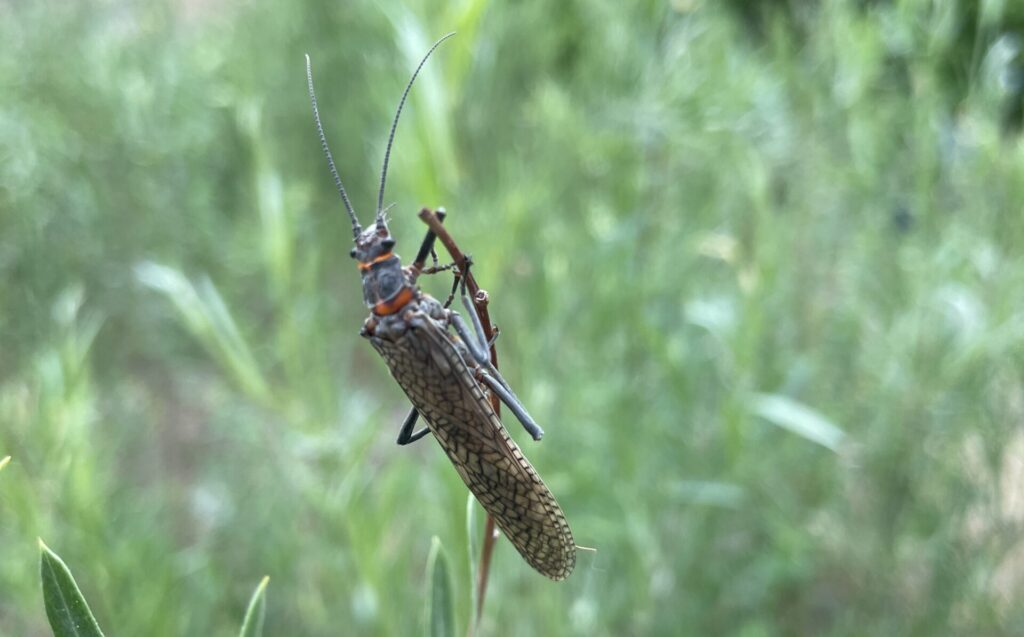
The "Hatch"
The quality of the fish on the Gunnison is due, in large part, to the bug life. Most notably are the Salmon Flies. These huge bugs provide an excellent source of protein for trout, and the trout know it. These bugs can be up to 3″ long and provide an easy meal for trout.
During this hatch, the fish eat with reckless abandon. The famous stonefly hatch brings in people from all over the country and for good reason.This is a great time of year to catch one of the iconic Gunnison River Rainbows on a dry fly and boy is it fun!

Gold Medal Water
From the Crystal Dam down to the confluence of the North Fork of the Gunnison are coined Gold Medal Waters. In order to be considered “Gold Medal Waters,” two things must be true:
- 60 lbs of fish per acre
- at least 12 quality trout that are 14″ or bigger
The Gunnison Gorge easily qualifies for this and anybody who’s ever fished it would most certainly agree. While only home to brown trout and rainbows, the quality of fish that reside here would please any angler.
Although not considered Gold Medal Water, the stretch of river from the North Fork to the Hwy 65 bridge can be quite productive. There are plenty of fish to be found on this ~14 mile stretch.
The Other Canyon
The Black Canyon isn’t the only one that the Gunnison River flows through. Downstream of Delta, CO, the Gunnison carves its way through Dominguez – Escalante National Conservation Area.
This area flies under the radar to fisherman, as it isn’t the most productive trout fishery, to be put lightly. However, it provides another opportunity for a scenic, multi-day river adventure.
The Gunnison River reaches its terminus near Grand Junction, CO, where it joins the Colorado River and continues to flow West.



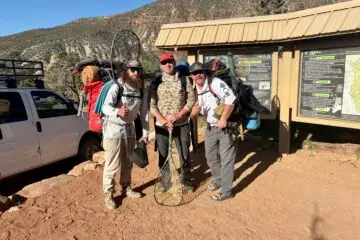
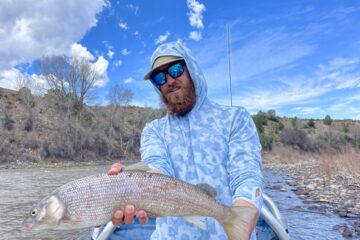
0 Comments